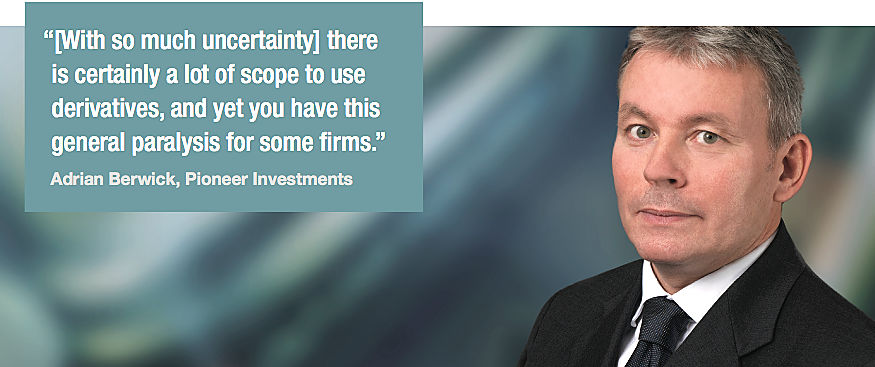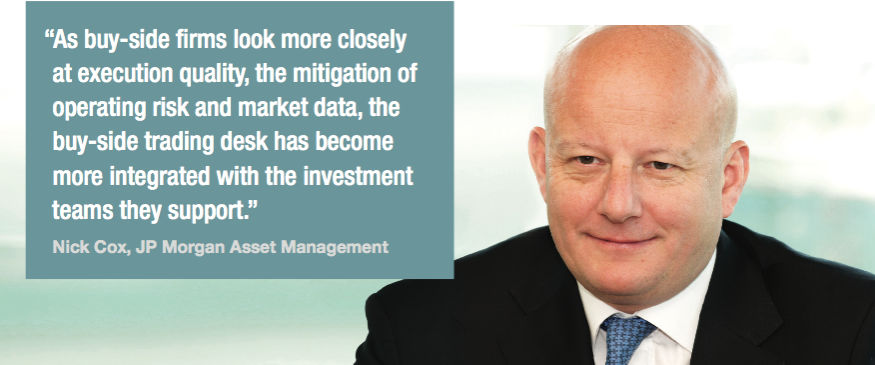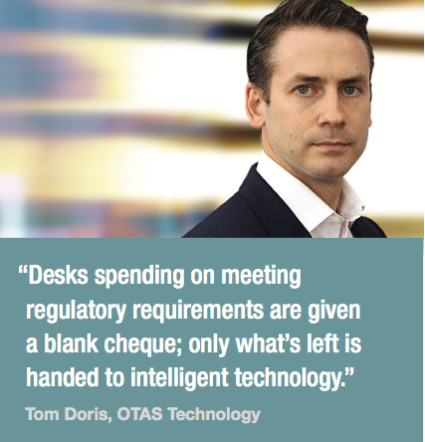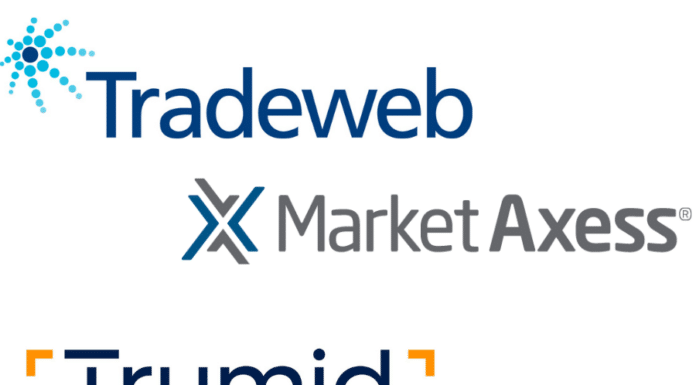Having full access to derivatives gives a trading desk greater flexibility, but heads of trading need to assess the operational burden. Francesca Carnevale and Dan Barnes write.
Macro events are likely to be big in 2017 making hedges against market risk a priority. Brexit is hitting the pound, President Trump is tweeting about government suppliers and central banks are talking up the early closure of asset purchasing. There are a host of potential bumps in the road which could impact short-term liquidity or pricing.

“If you look at the VIX you wouldn’t think anything was happening,” says Adrian Berwick, head of trading for Dublin & London, at Pioneer Investments. “But if you looked at the fixed income side there certainly has been some huge movements either on FX or on the yields that would justify putting hedging in place.”
Nick Cox, head of global fixed income trading at JP Morgan Asset Management says, “[Since October] the markets have potentially moved back to a more long-term normal volatility regime. This recent pick-up could mean it is easier to get things done, though at this point we remain cautious as to the outlook.”
The number of traders handling credit derivatives is typically proportionate to the size of a firm – two to three traders in firms with under US$100 billion assets under management (AUM), up to six or seven traders in firms with over US$500 billion AUM. Interest rate derivatives are often handled by a smaller team, typically handled by up to three traders even at the largest firms.

For those traders, handling volatility in a highly liquid market might be a breeze, but with liquidity in such debatable shape in the fixed income markets, having access to a range of instruments is crucial to fully support the desk’s risk management capabilities. A new report by consultants at Sapient Global Markets found that buy-side firms are increasing their investment in derivatives trading capabilities on the desk.
For heavy users of over-the-counter (OTC) derivatives, for either alpha generating strategies or for hedging purposes, increasing capabilities will be a relatively comfortable process, but buy-side firms that are later to the game will need to look carefully at this business and how it is run, especially since regulation has increased the cost.
“These [effects] are forcing firms to adopt new processes and systems to not only keep pace but to also thrive and grow,” the Sapient consultant team wrote. “As a result, many large global asset management firms are at an important crossroads in their development. In the face of increased usage and complexity of products, they need to expand their investment strategies and vehicles internationally. They also need to support higher volumes of existing traded products with less manual support, improved risk management and enhanced user experience.”
Trading desks are undergoing this change in the context of a wider process, connecting the flow of data across portfolio management and risk functions says Cox.
“As buy-side firms look more closely at execution quality, the mitigation of operating risk and market data, the buy-side trading desk has become more integrated with the investment teams they support,” he says. “[They want] to generate alpha over a certain horizon; typically a longer horizon than a sell-side trader who is looking only at business at a daily P&L level.”
The mechanics
The launch of absolute return funds is increasing the need for more dynamic derivatives use. These funds have been gaining popularity over the past 12 months; long-established vehicles like Standard Life’s Global Absolute Return Strategies have been joined by more recent launches from AXA IM, M&G and Blackrock. When employing these absolute return strategies, derivatives can be used to create an overlay, which can act as a short-term bet to protect from the downside of specific event.
“We have been putting on overlays for a long time and our process works, but it’s more challenging when interest rates are so low given that the correlation of strategies tend to be higher,” says Berwick. “It is an important part of our offering that our clients are comfortable with, we have a good risk budgeting team in place that monitors the levels of risk and exposure and duration. You need a machine behind you to make the process work.”
That machine can require a considerable investment by the trading desk into IT and operations. This is not only an issue for internal teams responsible for these areas but the third party firms who supply order and execution management systems (OMS/EMS).
Andy Nybo, managing director at analyst house TABB Group says, “Buy-side firms without deep pockets to spend on technology either find themselves either in extremis or they are dependent on third-party solutions to help them navigate an increasingly demanding marketplace.”
Sapient’s team noted that while each strategy and operational arrangement may be different, there are core considerations that every firm should make:
- Derivatives portfolio – types of derivatives traded, investment strategies and volume
- OMS support – systems used by asset type and/or front-to-back functions
- Trade support – in-house operations vs. outsourced operations
- Other – location of trading and operating centres, current challenges and future plans
“There is much demand from our clients to have even more access to derivatives markets, so we are getting credit default swaps on the desk, including senior names,” says one global head of trading. “We will also expand into the options side of the derivatives market, which is pretty technical. That needs not only the trading platform but also the OMS to support options which are pretty inconsistent in some aspects with the other cash business.”
Yet fixed income traders cannot rely on an equity-based OMS or an equities OMS with a fixed income add-on. There are calculations and metrics needed in the system – the trader needs duration, contribution, the ability to see start date and end dates, the ability to unwind and novate – adding up to a lot of specific functionality.
“The OMS is fundamental to being able to scale up your usage of derivatives,” says Berwick.
The environment has turned
Overcoming the operational complexity is compounded by the challenge of handling the regulatory environment. Variation margin rules that came into effect on 1 March 2017 for trading OTC derivatives have found many firms wanting in their ability to get the right documentation arranged with counterparts; anecdotally many credit support annexes (CSAs) are said to be outstanding between investment banks and clients. Some have agreed to trade on the old CSAs while the new CSAs are put in place.
 Having compliance as a driver can open the purse strings says Tom Doris, chief executive of OTAS Technology, however the extent to which that will support trading is not certain. “Desks spending on meeting regulatory requirements are given a blank cheque; only what’s left is handed to intelligent technology that could help firms better manage new market conditions,” he says.
Having compliance as a driver can open the purse strings says Tom Doris, chief executive of OTAS Technology, however the extent to which that will support trading is not certain. “Desks spending on meeting regulatory requirements are given a blank cheque; only what’s left is handed to intelligent technology that could help firms better manage new market conditions,” he says.
MiFID II, scheduled to come into effect in January 2018, has added to the complexity around derivatives trading. It has a very ‘last minute’ feel, for example, ascertaining which derivatives will be subject to the Trading Obligation under MiFID II, which in turn will classify them as ‘Traded on a Trading Venue’ or otherwise has yet to be determined. That will have implications for the cost and complexity of trading derivatives and the absence of clarity will not help firms need to start applying trading derivatives to better manage portfolios.
“There is an awful lot of uncertainty due to MIFID II and the accompanying Regulation (MiFIR) while at the same time people should possibly be looking to put in hedging strategies ahead of interest rates probably going up, uncertainty with Brexit, with elections taking place in Europe,” says Berwick. “There is certainly a lot of scope to use derivatives, and yet you have this general paralysis for some firms.”
©Markets Media Europe 2025










